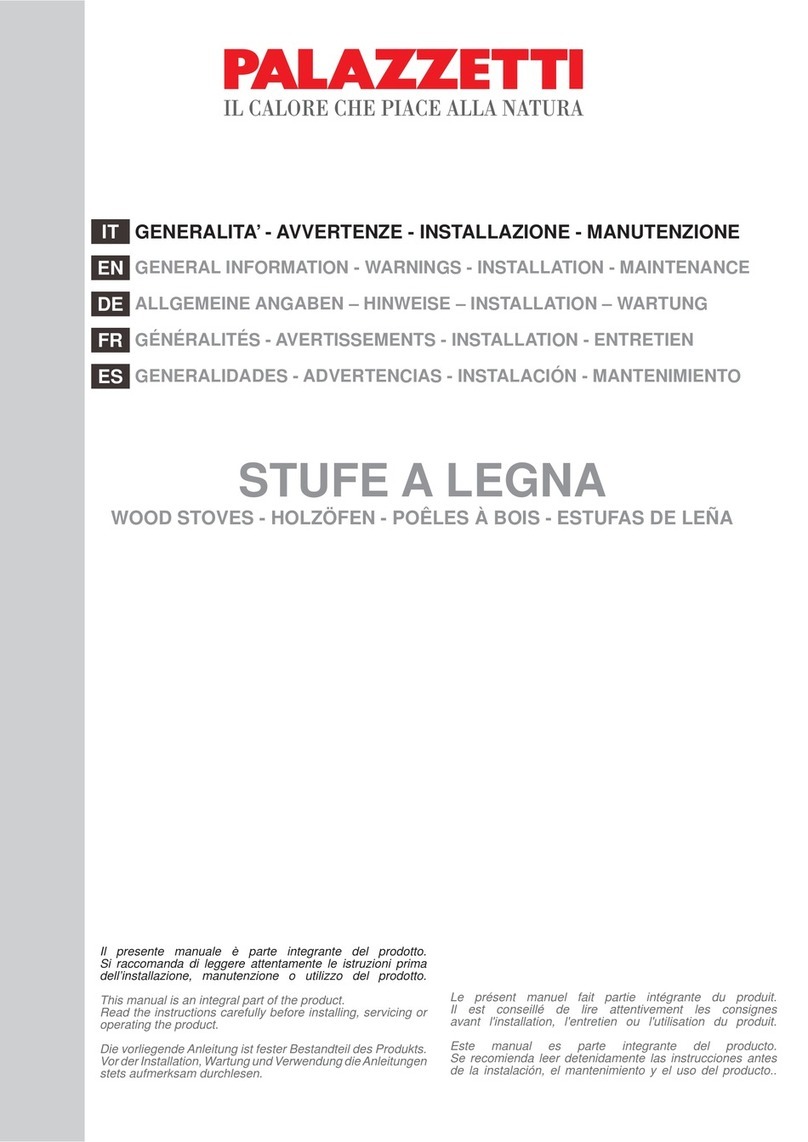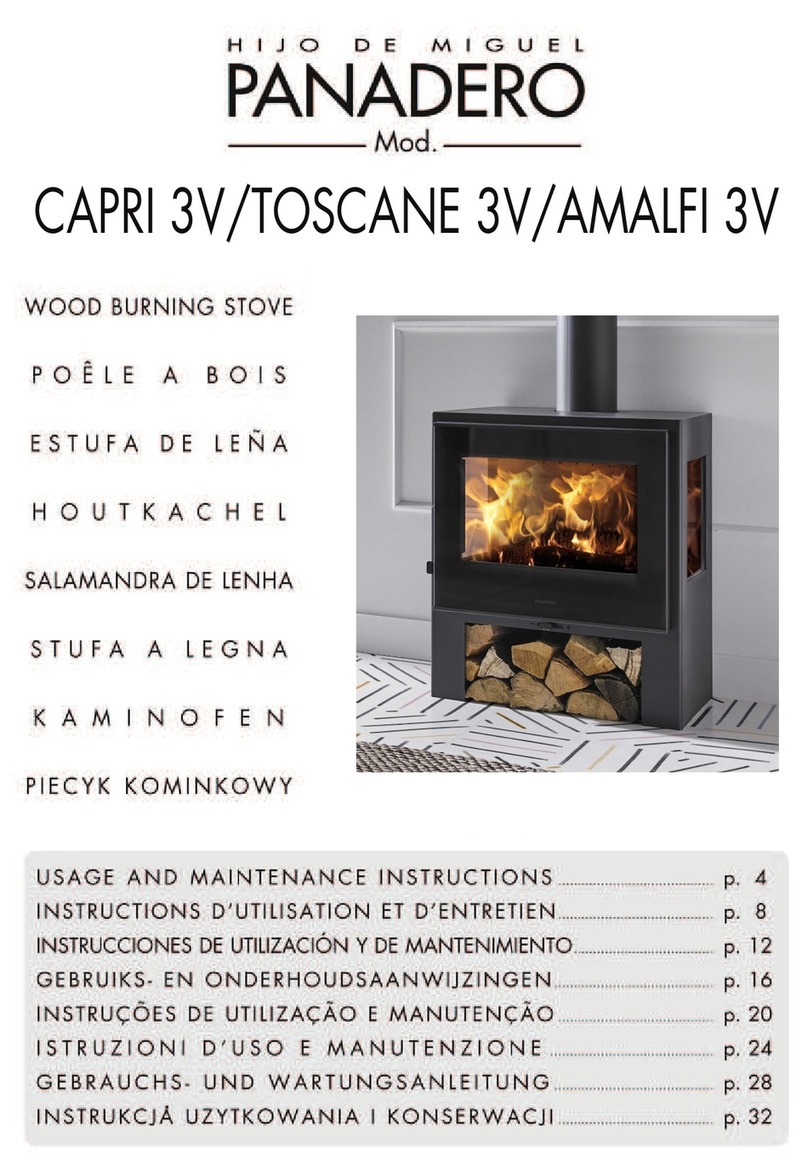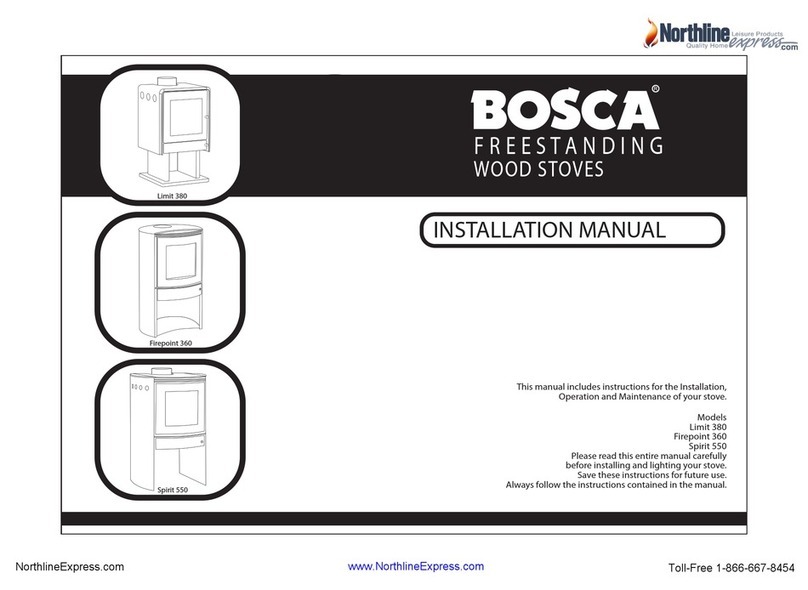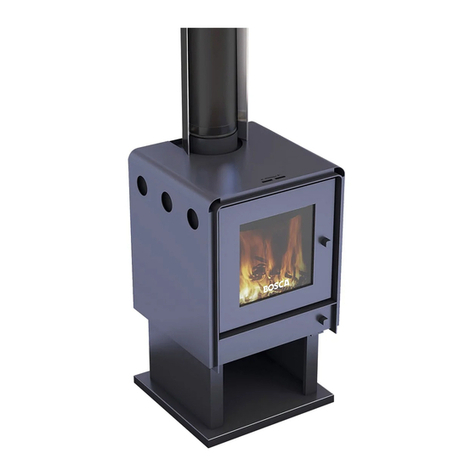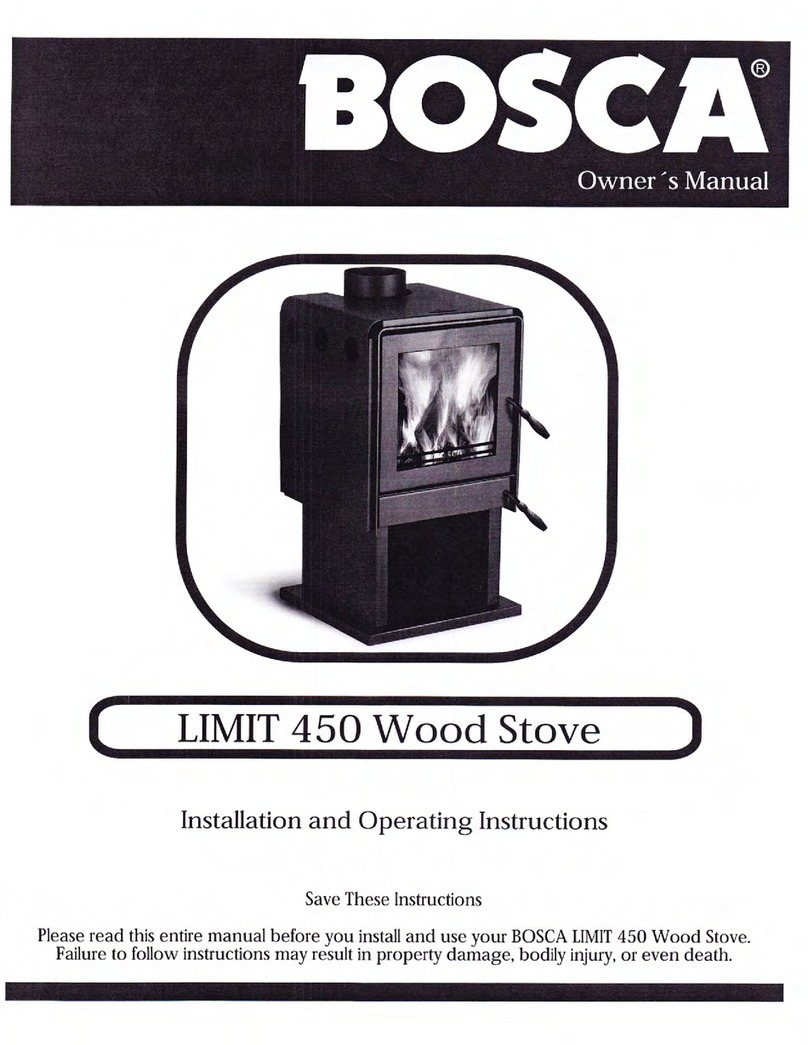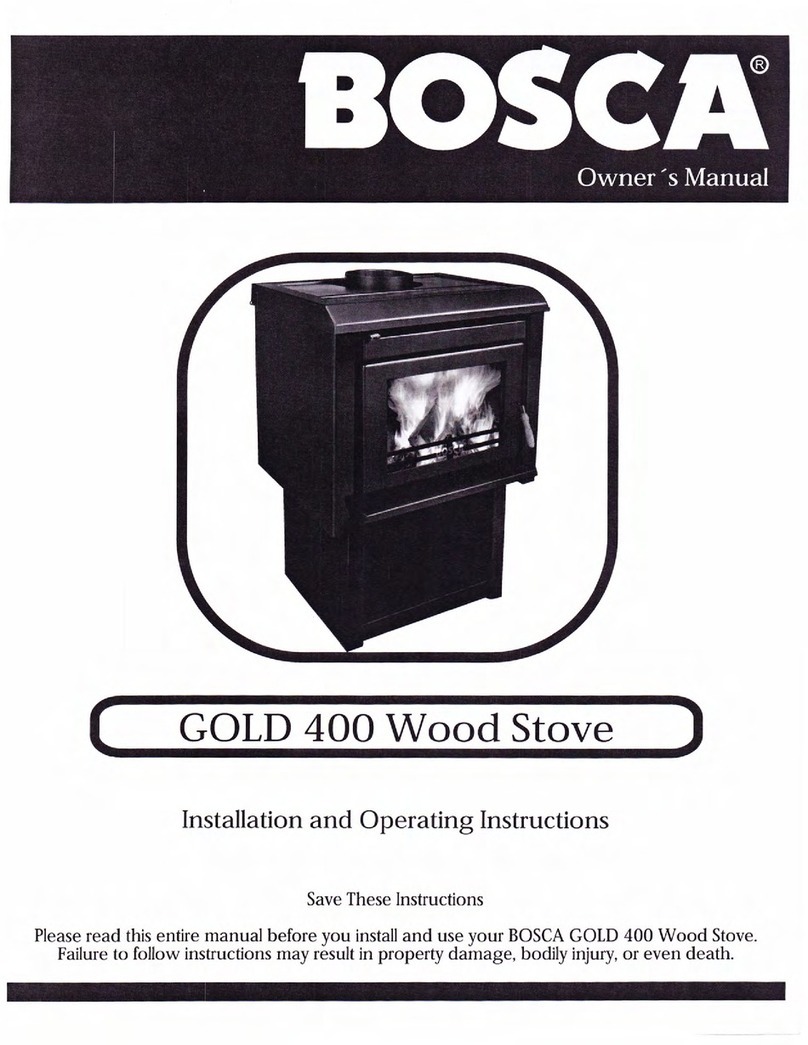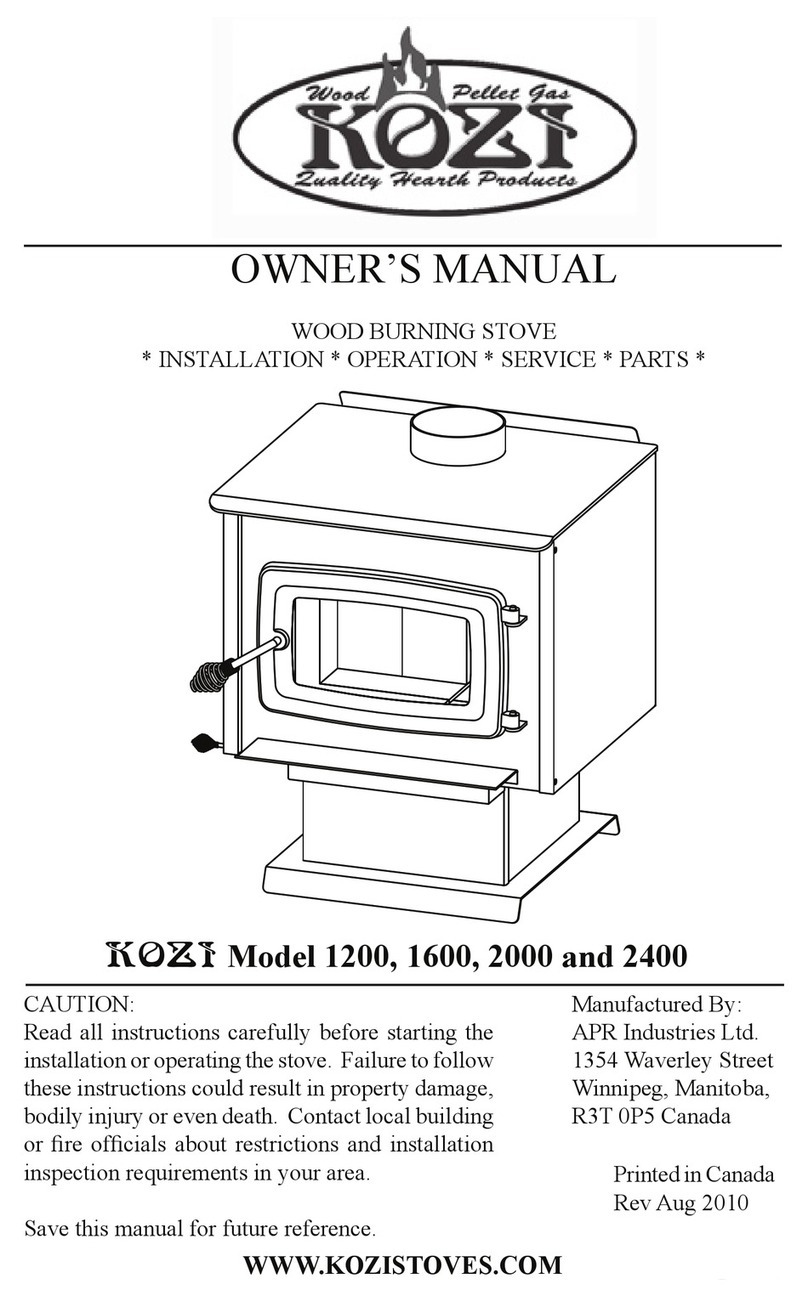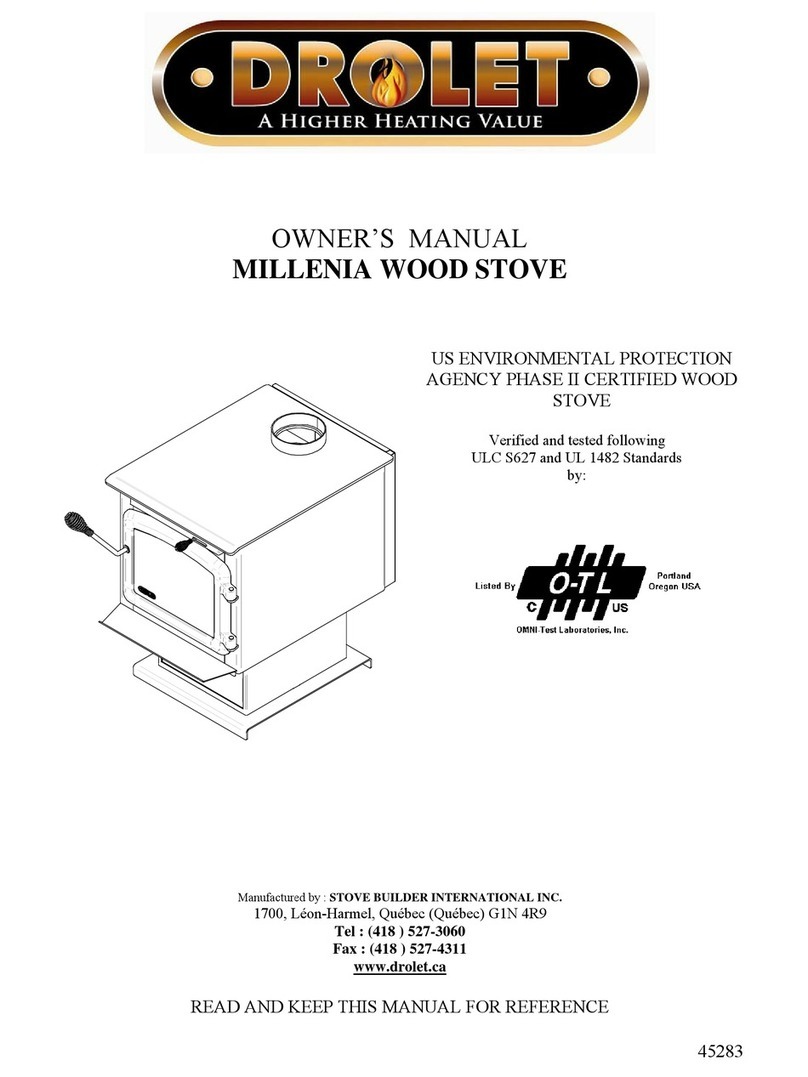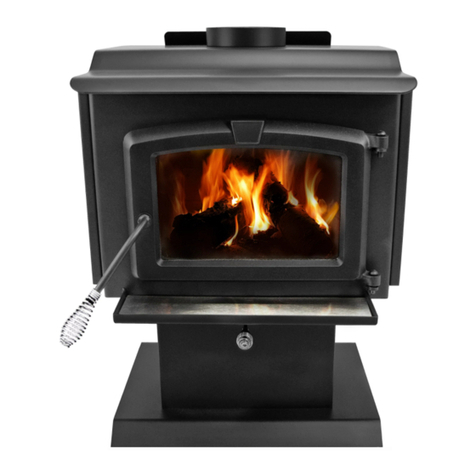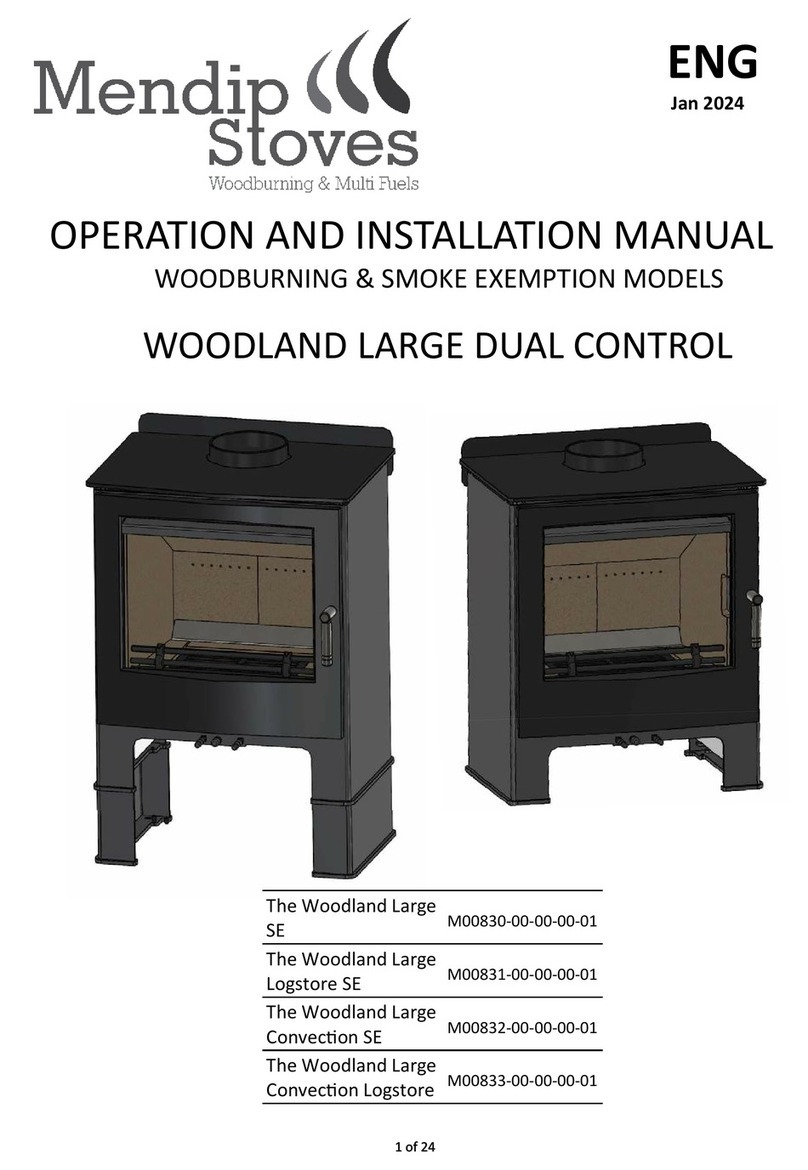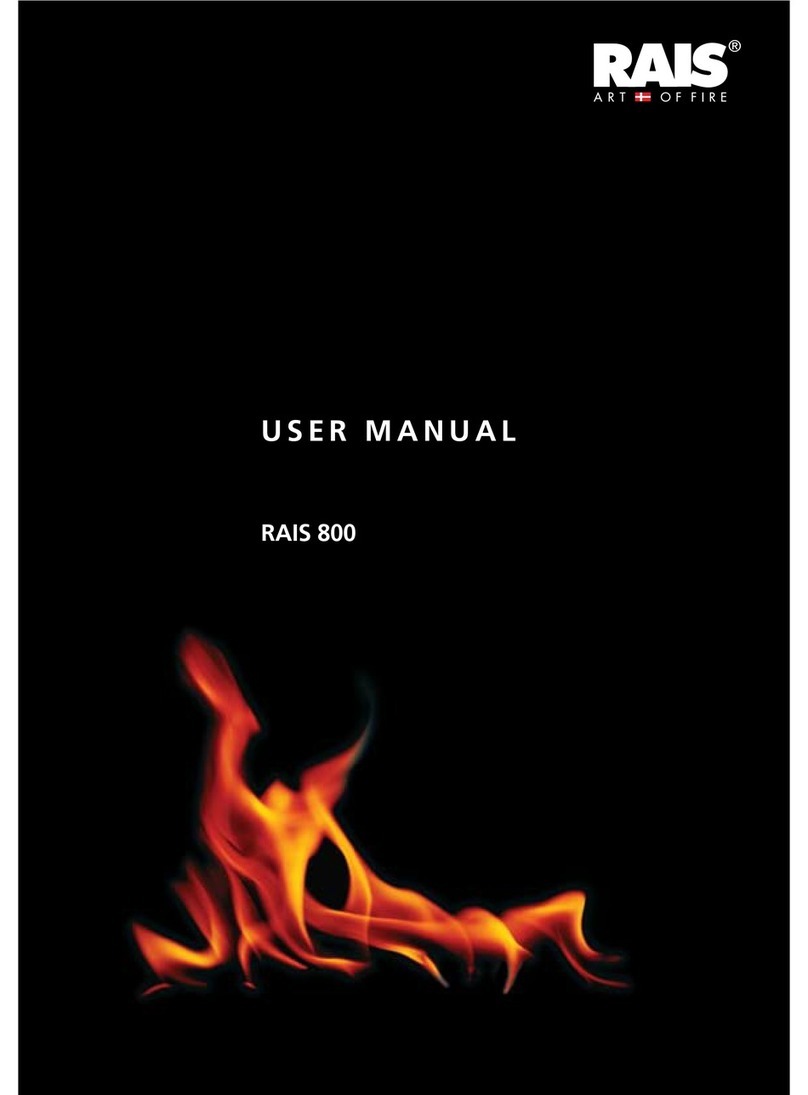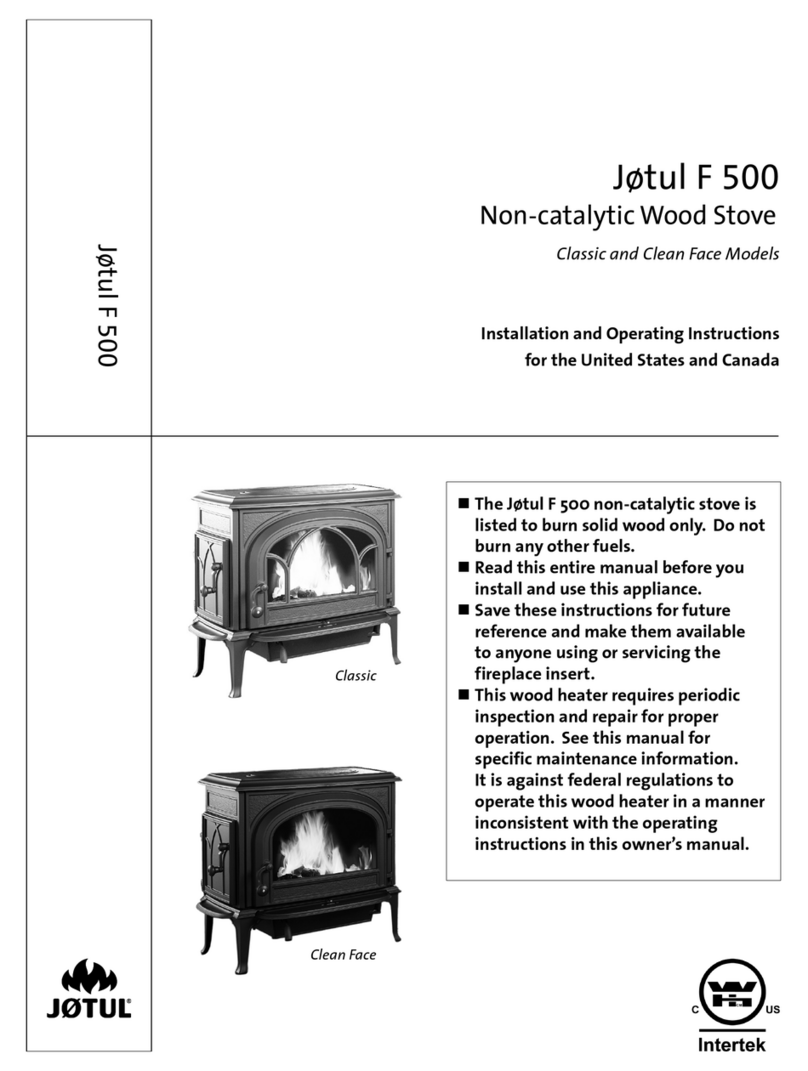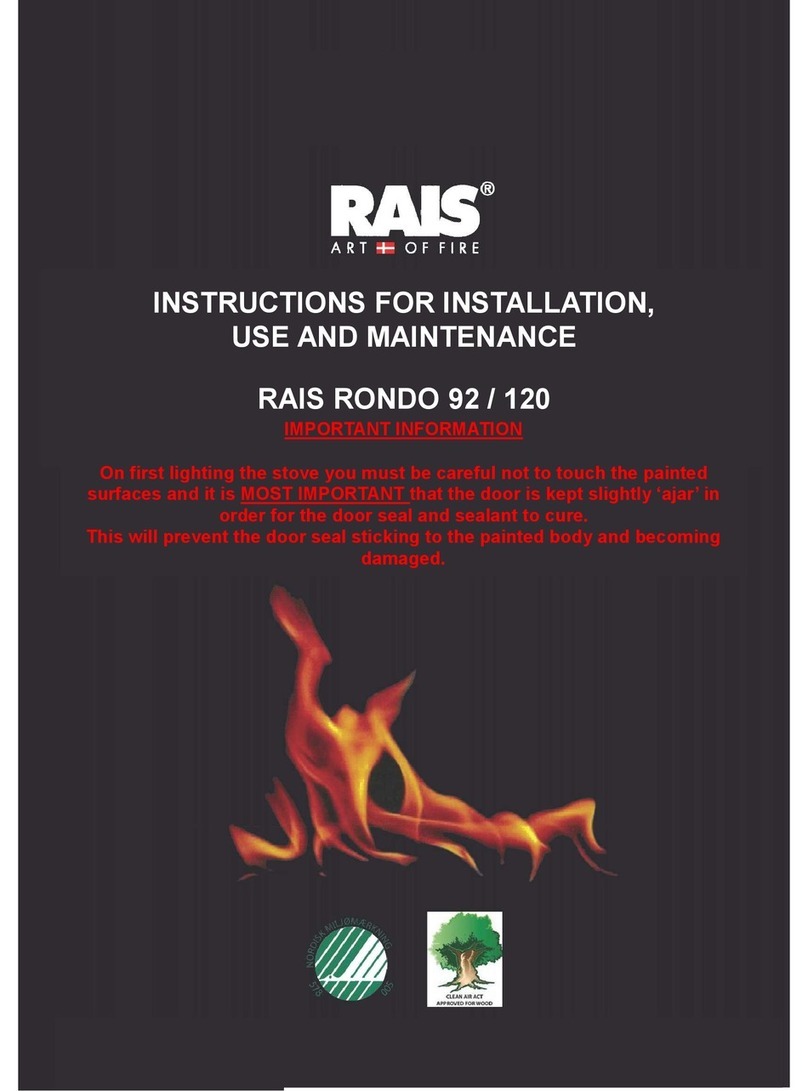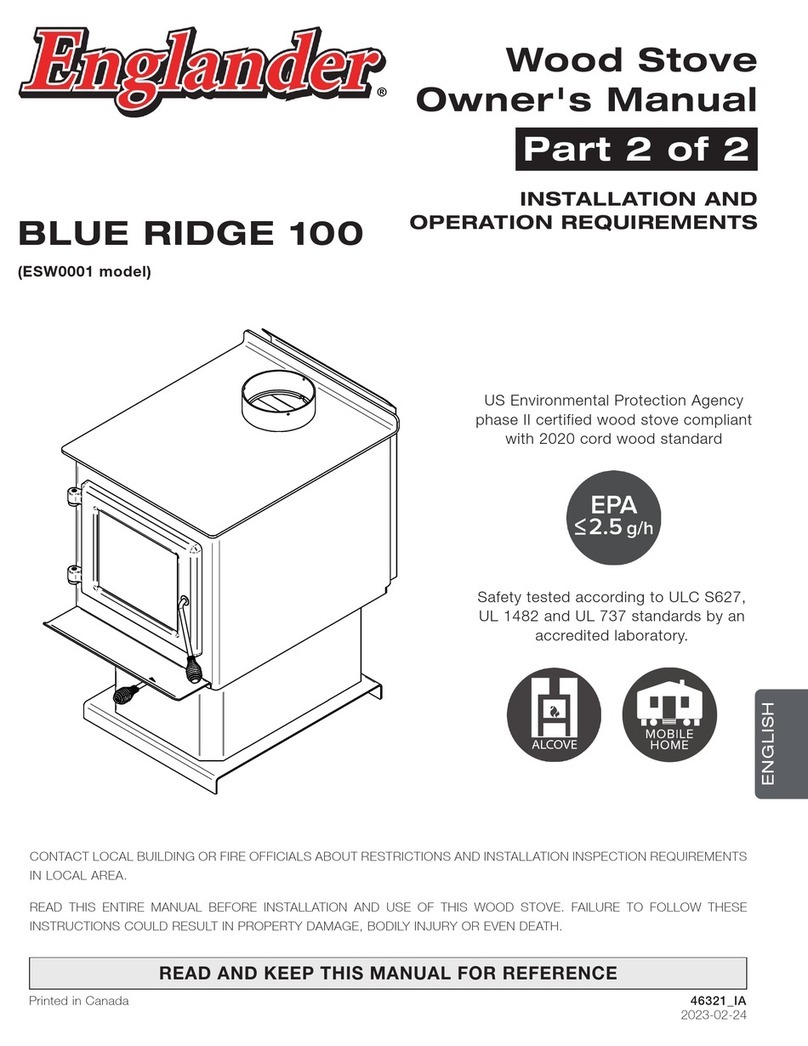
Minimum chimenev clearance to bficl
and combustibles Z in. (50.8 mm)
rLll I
IF-- - - l
tF+-ffr I
l#i I
]t#}-]+t
TiF==r= |
ttF++#t
lffi
=
tr
tr
O
Minimum l2 in. (304.8 mm)
to combustibles
Nonsoluble
refractory cement Minimum clearance
9 in. (228.6 mm)
Chimnev
Connecfor
Use chimnev
mfrs. oarts t6
attach connector
securely
Sheet steel
supports
Minimum chimenev clearance to
sheet steel suo"oorts and
combustibles 2 in (50.8 mm)
Sheet steel
, supports
Masonrv
Chimnei
Combustible WallChimney Connector Pass - Throughs
Method A.12" (304.8 mm) Clearance to Combustible Wall
Member: Using a minimum thickness 3.5" (89 mm) brick and
a 5/8" (15.9 mm) minimum wall thickness clay liner, construct
a wallpass{hrough. The clay liner must conforin to ASTM C315
(Standard Specification for Clay Fire Linings) or its equivalent.
Keep a minimum of 12" (304.8 mm) of brick masonry between
the clay liner and wall combustibles. The clay liner shall run
from the brick masonry outer surface to the inner surface of the
chimney flue liner buinot past the inner surface. Firmly grout
or cemenl the clay liner in place to the chimney flue liner.
Method B. 9" (228.6 mm) Clearance to Combustible Wall
Member: Using a 6" (152.4 mm) inside diameter,listed, factory-
built Solid-Pak chimney section with insulation of 1" (25.4 mm)
or more, build a wallpass-through with a minimum 9" (228.6
mm) air space between the outer wall of the chimney length
and wall combustibles. Use sheet metal supports fastened
securely to wall surfaces on all sides, to maintain the 9" (228.6
mm) air space. When fastening supports to chimney length,
do not penetrate the chimney liner (the inside wall of the Solid-
Pak chimney). The inner end of the Solid-Pak chimney section
shall be flush with the inside of the masonry chimney flue, and
sealed with a non-water soluble refractory cement. Use this
cement to also seal to the brick masonry penetration.
Method C.6" (152.4 mm) Clearance to Combustible Wall
Member: Starting with a minimum 24 gage (.02a" [.61 mm])
6" (152.4 mm) metal chimney connector, and a minimtm24
gage ventilated wallthimble which has two air channels of 1"
(25.4 mm) each, construct a wall pass{hrough. There shall be
a minimum 6" (152.4) mm separation area containing fiberglass
insulation, from the outer surface of the wall thimble to wall
combustibles. Support the wall thimble, and cover its opening
with a Z4-gage minimum sheet metal support. Maintain the 6"
(152.4 mm) space. There should also be a support sized to fit
and hold the metal chimney connector. See that the supports
are fastened securely to wall surfaces on all sides. Make sure
fasteners used to secure the metal chimney connector do not
penetrate chimney flue liner.
Method D. 2" (50.8 mm) Clearance to Combustible Wall
Member: Start with a solid-pak listed factory built chimney section
at least 12" (304 mm) long, with insulation of 1" (25.4 mm) or
more, and an inside diameter of 8" (2 inches [51 mm] larger
than the 6" 1152.4 mml chimney connector). Use this as a pass-
through for a minimum Z{-gage single wall steel chimney
connector. Keep solid-pak section concentric with and spaced
l" (25.4 mm) offthe chimney connector by way of sheet metal
support plates at both ends of chimney section. Cover opening
with and support chimney section on both sides with 24 gage
minimum sheet metal supports. See that the supports are fastened
securely to wall surfaces on all sides. Make sure fasteners used
to secure chimney flue liner.
NOTES:
1. Connectors lo a masomy chimney, excepting method B, shall extend in one continuous seclion through the wall pass-through system and the chimney wall, to but not past
the inner fiue liner [ace.
2. A chimney connector shall not pass through an attic or roof space, closet or similar concealed space, or a floor, or ceiling.
Toll-Free 1-866-667-8454
NorthlineExpress.com www.NorthlineExpress.com



